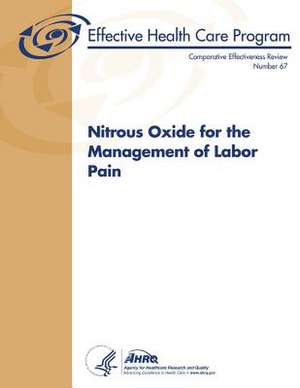Nitrous Oxide for the Management of Labor Pain
Autor U. S. Department of Heal Human Services, Agency for Healthcare Resea And Qualityen Limba Engleză Paperback
Preț: 205.96 lei
Preț vechi: 216.79 lei
-5% Nou
Puncte Express: 309
Preț estimativ în valută:
39.42€ • 42.84$ • 33.14£
39.42€ • 42.84$ • 33.14£
Carte disponibilă
Livrare economică 31 martie-14 aprilie
Preluare comenzi: 021 569.72.76
Specificații
ISBN-13: 9781484094631
ISBN-10: 1484094638
Pagini: 370
Dimensiuni: 216 x 279 x 20 mm
Greutate: 0.86 kg
Editura: CREATESPACE
ISBN-10: 1484094638
Pagini: 370
Dimensiuni: 216 x 279 x 20 mm
Greutate: 0.86 kg
Editura: CREATESPACE
